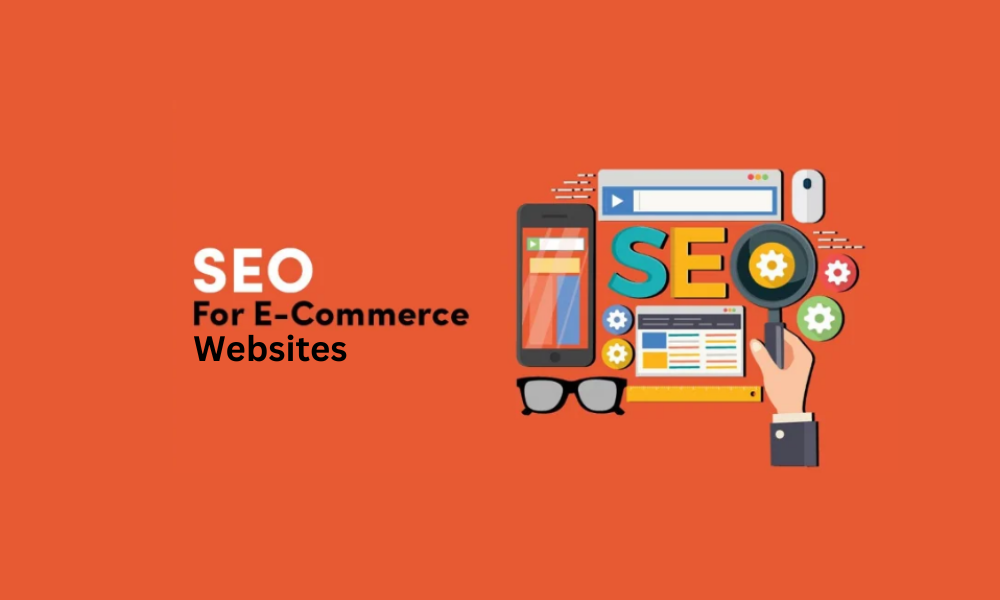In the digital age, where online shopping has become the norm, SEO for e-commerce websites is crucial for standing out in a competitive market. SEO (Search Engine Optimization) plays a vital role a improving visibility on search engine results pages (SERPs). To help your e-commerce business thrive, here are some best practices for effective SEO implementation:
Table of contents
SEO for E-commerce Websites
SEO for e-commerce websites involves optimizing product pages, category pages, and overall site structure to rank higher on search engines like Google, Bing, and Yahoo. It focuses on improving visibility, driving relevant traffic, and ultimately increasing sales.
Understanding E-commerce SEO Basics
Before diving into advanced strategies, it’s essential to understand the basics of e-commerce SEO, including keyword research, on-page optimization, off-page optimization, and technical SEO elements.
| Aspect | Explanation |
| Keyword Research | This involves identifying relevant keywords that your target audience uses when searching for products or services. |
| On-Page Optimization | Refers to optimizing elements on your website such as titles, meta descriptions, headings, and content for SEO. |
| Off-Page Optimization | Involves activities outside your website, like building backlinks from reputable sources to improve your site’s authority. |
| Technical SEO Elements | Focuses on technical aspects like site speed, mobile-friendliness, URL structure, and schema markup for better search engine visibility. |
Keyword Research for E-commerce SEO
Conduct thorough keyword research to identify high-volume, relevant keywords for your products. Use tools like Google Keyword Planner, SEMrush, or Ahrefs to discover search terms that align with your offerings and target audience.

- Keyword Planning Tools: Utilize tools like Google Keyword Planner, SEMrush, Ahrefs, or even free tools like Ubersuggest to start your keyword research process.
- Product Relevance: Identify keywords that directly relate to your products or services. These should include product names, descriptions, and specific features.
- Search Volume: Look for keywords with high search volume to ensure that there’s enough demand for those terms. This helps prioritize which keywords to focus on.
- Long-Tail Keywords: Don’t just focus on high-volume keywords. Also, target long-tail keywords (more specific, longer phrases) that may have lower search volume but higher conversion rates.
On-Page Optimization Techniques
1. Title Tags and Meta Descriptions
Craft compelling title tags and meta descriptions for each product page, incorporating relevant keywords and enticing language to encourage clicks.
2. Product Descriptions and Content Optimization
Write unique and informative product descriptions that highlight features, benefits, and solutions for customers. Optimize content with keywords naturally without keyword stuffing.
3. Image Optimization
Optimize product images by using descriptive filenames, alt text, and compressed file sizes to improve page load times and enhance user experience.
4. URL Structure
Create SEO-friendly URLs that are concise, descriptive, and include relevant keywords to improve visibility and click-through rates.
Off-Page Optimization Strategies
Earn high-quality backlinks from reputable websites in your industry to improve domain authority and organic search rankings. Integrate social sharing buttons and encourage social engagement to amplify brand visibility and attract potential customers.

Additionally, integrating social sharing buttons on your website and actively encouraging social engagement can further amplify your brand’s visibility. Social media platforms are powerful channels for reaching a wider audience, driving traffic to your site, and increasing brand awareness.
By regularly sharing valuable content, engaging with your audience, and encouraging them to share your content, you can attract potential customers and enhance your brand’s online presence.
Online Communities
Another off-page optimization strategy is to participate in online communities and industry-specific directories. Joining relevant forums, groups, and communities allows you to network with peers, share insights, and showcase your expertise. Participating in industry directories and listings not only improves your website’s visibility but also helps potential customers find your business more easily.
Technical SEO for Ecommerce

Site Speed and Mobile Responsiveness
Optimize site speed and ensure mobile responsiveness to provide a seamless user experience across devices, which positively impacts SEO rankings.
Schema Markup for Products
Implement structured data markup (Schema.org) to enhance search engine understanding of your products, leading to rich snippets in search results.
Canonical Tags and Pagination
Use canonical tags to avoid duplicate content issues and implement pagination best practices for large product catalogs.
E-commerce SEO Tools and Analytics
Utilize tools like Google Analytics and Search Console to monitor website performance, track keyword rankings, and identify areas for improvement. Invest in SEO tools for comprehensive keyword analysis and overall competitor insights.
SEO Content Strategy for Ecommerce Blogs
Develop a content strategy for your e-commerce blog, focusing on creating valuable, SEO-optimized content that addresses customer pain points, educates, and builds brand authority.
– Creating High-Quality Blog Content
Publish informative articles, buying guides, and product reviews to attract organic traffic and engage potential customers accordingly throughout their buying journey.
– Internal Linking for SEO
Implement strategic internal linking to connect related pages within your website, distribute link equity, and further improve crawlability for search engines.
Conclusion
Implementing SEO best practices for e-commerce websites is an ongoing process that requires continuous monitoring, optimization, and adaptation to search engine algorithms. Furthermore, by focusing on keyword research, on-page and off-page optimization, technical SEO, and content strategy, you can improve organic visibility, drive targeted traffic, and increase conversions.
Read more : 5 Ways a Revamped Website Can Boost Your Sales
Unique FAQs on E-commerce SEO:
Mobile optimization is crucial for e-commerce SEO as it directly impacts user experience, search rankings, and conversions. Hence Google’s mobile-first indexing prioritizes mobile-friendly websites, making responsive design and fast load times essential for success.
E-commerce businesses can target long-tail keywords (specific, longer search phrases) to capture highly targeted traffic as well as improve conversion rates.
Content marketing plays a vital role in e-commerce SEO by providing valuable, relevant content that attracts organic traffic as well as builds brand authority, and encourages engagement.
Common SEO mistakes to avoid in e-commerce websites include duplicate content issues, thin product descriptions, lack of keyword optimization, slow loading times as well as poor mobile responsiveness, and neglecting technical SEO aspects like schema markup and canonical tags.





